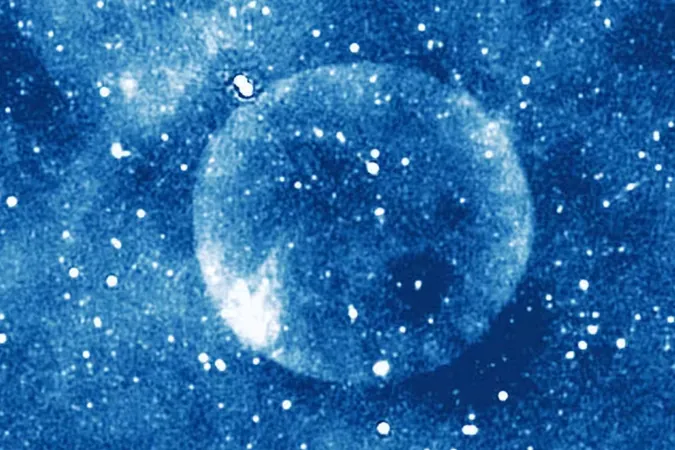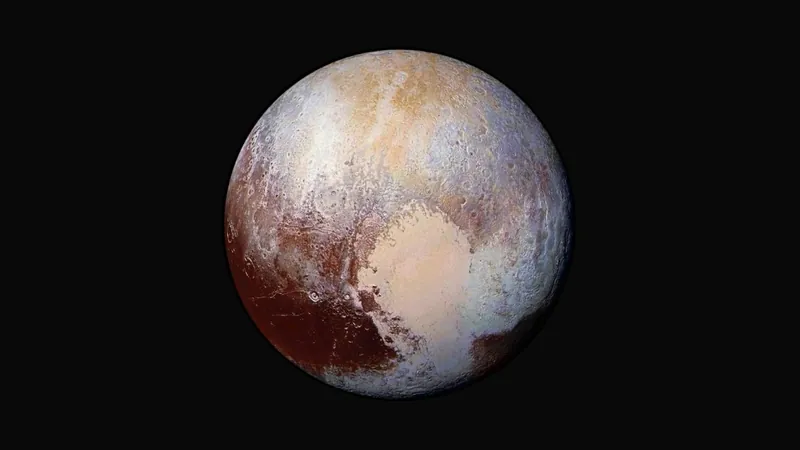
Astronomers Stunned by Discovery of Perfect Circle in Milky Way!
2025-05-28
Author: Ting
A Cosmic Mystery Unveiled
In a groundbreaking revelation, astronomers have uncovered a breathtakingly perfect circular object within the Milky Way, igniting curiosity and excitement in the scientific community. Dubbed "Teleios," a name rooted in the Greek term for perfection, this enigmatic celestial sphere is only detectable in radio frequencies, posing a significant challenge to our existing understanding of cosmic formations.
The Astonishing Find
Recently documented by researchers at Western Sydney University using the advanced capabilities of the Australian Square Kilometre Array Pathfinder (ASKAP), this object—cataloged as G305.4-2.2—presents an almost mathematical perfection in its symmetry. Unlike the usual irregular shapes found in space, the flawless circularity of Teleios has left seasoned astronomers scratching their heads, desperate to decode its origins.
What Could It Be?
Initial theories have quickly been dismissed. Teleios is not a planetary nebula, nor does it fit the profile of a Wolf-Rayet bubble produced by massive stars. Even the thought of a Dyson sphere—a theoretical megastructure built by advanced alien civilizations—fell flat due to the absence of infrared emissions typically associated with such structures.
Leading Theory: A Supernova Remnant?
After extensive analysis, experts suspect that Teleios might be a supernova remnant. When massive stars undergo supernova explosions, they eject bubbles of matter that generally create asymmetric shells. However, the strikingly symmetrical nature of G305.4-2.2 suggests an unusually uniform expansion possibly caused by an exceptionally symmetric stellar explosion or an even distribution of surrounding space.
How Far Is Teleios?
Determining its exact features has been tricky. Initial estimates range from 7,175 to 25,114 light-years away from Earth, leading to a significant discrepancy in its size—between 46 and 157 light-years in diameter. This distance also informs age estimates, indicating that Teleios could be anything from under 1,000 years to older than 10,000 years.
Why This Matters
This discovery holds monumental implications for our understanding of galactic evolution. Supernova remnants, like Teleios, play a crucial role in enriching the interstellar medium and shaping its structural properties. With only about 300 known supernova remnants in our galaxy, while estimates suggest there could be over 2,000, every new discovery unveils new layers of the complex cosmic tapestry.
Charting New Territory in Astronomy
The unveiling of Teleios is not just a fascinating anomaly; it could reshape current astrophysical theories. If indeed confirmed as a supernova remnant, this object may reveal new insights into the mechanics of stellar explosions or highlight unique conditions that facilitate such strikingly symmetric expansions.
As researchers continue to explore the cosmos using cutting-edge radio astronomy technologies, the hope is that more answers will emerge about Teleios and its extraordinary characteristics. In doing so, we might redefine what we know about the universe and uncover mysteries that have long baffled humanity.
An Unforeseen Legacy
Just as discoveries from Earth's deepest oceans have revolutionized our understanding of marine life, the enigmatic, perfect circle of Teleios compels astronomers to rethink established paradigms. With each astonishing find, we draw one step closer to unlocking the secrets of the universe, suggesting that the cosmos has many more surprises awaiting us.





 Brasil (PT)
Brasil (PT)
 Canada (EN)
Canada (EN)
 Chile (ES)
Chile (ES)
 Česko (CS)
Česko (CS)
 대한민국 (KO)
대한민국 (KO)
 España (ES)
España (ES)
 France (FR)
France (FR)
 Hong Kong (EN)
Hong Kong (EN)
 Italia (IT)
Italia (IT)
 日本 (JA)
日本 (JA)
 Magyarország (HU)
Magyarország (HU)
 Norge (NO)
Norge (NO)
 Polska (PL)
Polska (PL)
 Schweiz (DE)
Schweiz (DE)
 Singapore (EN)
Singapore (EN)
 Sverige (SV)
Sverige (SV)
 Suomi (FI)
Suomi (FI)
 Türkiye (TR)
Türkiye (TR)
 الإمارات العربية المتحدة (AR)
الإمارات العربية المتحدة (AR)